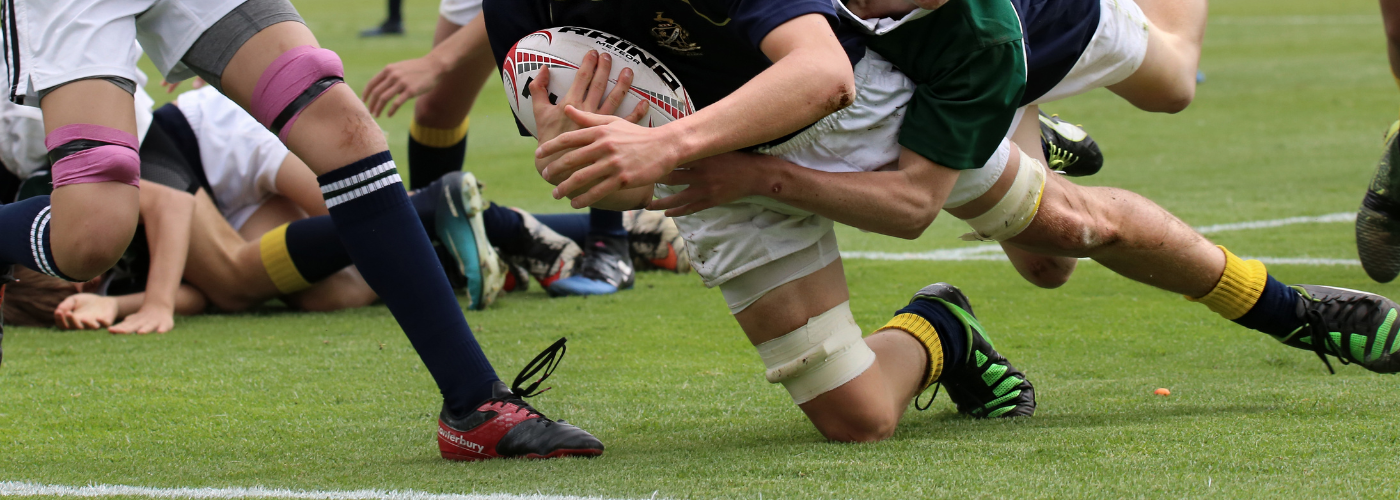Nauka słownictwa sportowego
Angielskie słówka ze świata sportu odnoszą się do zbioru słów i zwrotów, które są powszechnie używane do komentowania różnych sportów, aktywności fizycznych, rozgrywek i innych tego typu. Zwroty te obejmują nazwy dyscyplin sportowych, używany sprzęt, zasady i przepisy, zachowania zawodników, techniki, strategie i inne aspekty związane ze sportem i aktywnością fizyczną.
Umożliwiają one skuteczną komunikację i porozumienie podczas rozmowy lub uczestnictwa w wydarzeniach sportowych, przy opisie meczów, analizie osiągnięć, omawianiu wiadomości sportowych i rozmowach związanych ze sportem w świecie anglojęzycznym.

Często używane w sporcie słówka
| Słowo | Wyjaśnienie |
|---|---|
| Athlete | A person who participates in sports or athletic activities. |
| Team | A group of players or athletes who compete together against another group. |
| Coach | A person who trains and guides athletes or a sports team. |
| Match | A game or competition between two individuals or teams. |
| Tournament | A series of matches or games where participants compete for a championship or prize. |
| Score | The number of points or goals achieved by a team or individual in a game. |
| Victory | Winning a game or competition. |
| Defeat | Losing a game or competition. |
| Championship | The highest level of competition or title in a sport. |
| Referee | An official who enforces the rules during a game and makes decisions on fouls or violations. |
| Stadium | A large sports venue or arena where games or events take place. |
| Fan | A supporter or enthusiast of a particular sports team or athlete. |
| Equipment | The tools, gear, or apparatus used in a sport, such as a ball, racket, or helmet. |
| Training | The process of practicing and preparing for a sport or competition. |
| Fitness | Physical condition and health required for sports performance. |
| Teammate | A fellow member of a sports team. |
| Goal | An objective or target in a game that teams or individuals aim to achieve. |
| Offside | A rule in certain sports (e.g., soccer) where an attacking player is in an unauthorized position when the ball is played to them. |
| Penalty | A punishment or consequence given for breaking the rules in a sport. |

Nauka słownictwa związanego z piłką nożną
| Słowo | Wyjaśnienie |
|---|---|
| Goalkeeper | The player positioned in front of the goal who defends it from the opposing team's attempts to score. |
| Forward | A player positioned closer to the opponent's goal, typically responsible for scoring goals and creating attacking opportunities. |
| Midfielder | A player positioned in the middle of the field, responsible for both defensive and offensive play, linking the defense and attack. |
| Defender | A player positioned in the defensive line, responsible for preventing the opposing team from scoring goals and protecting their own goal. |
| Penalty kick | A free kick awarded to a team when a foul is committed inside the opponent's penalty area, taken from the penalty spot and defended only by the opposing goalkeeper. |
| Offside | A rule that states an attacking player cannot be closer to the opponent's goal line than the ball and the second-to-last defender when the ball is played to them. |
| Corner kick | A set-piece restart where the attacking team kicks the ball from the corner arc of the field, usually aiming to create a scoring opportunity. |
| Yellow card | A cautionary card shown by the referee to a player as a warning for committing a foul or displaying unsporting behavior. |
| Red card | A card shown by the referee to signal a player's dismissal from the game due to a serious foul, violent conduct, or receiving two yellow cards. |
| Extra time | Additional playing time added to a match when the score is tied at the end of regulation time, typically to determine a winner in knockout competitions. |
| Hat-trick | When a player scores three goals in a single game. |
| Tackle | A defensive move where a player attempts to take the ball away from an opponent by cleanly intercepting it with their foot. |
| Dribble | The act of moving the ball forward while maintaining control by skillfully maneuvering around opponents. |
| Formation | The strategic arrangement of players on the field, indicating their positions and roles within the team's tactical setup. |
| Counterattack | A fast offensive maneuver initiated by the defending team immediately after winning possession of the ball. |

Nauka słownictwa tenisowego
| Słowo | Wyjaśnienie |
|---|---|
| Serve | The act of hitting the ball to start a point. The server stands behind the baseline and aims to get the ball into the opponent's service box. |
| Forehand | A stroke made with the palm of the hand facing forward, typically executed on the dominant side of the body for right-handed players. |
| Backhand | A stroke made with the back of the hand facing forward, typically executed on the non-dominant side of the body for right-handed players. |
| Volley | Hitting the ball in mid-air before it bounces on the ground, usually near the net. It is an offensive shot often used when players are close to the net. |
| Smash | A forceful overhead shot aimed to hit the ball with power and accuracy downward towards the opponent's court, usually executed when the ball is high in the air. |
| Deuce | A situation in which both players or teams have won three points each in a game. The next point after deuce is called advantage. |
| Love | A term used to represent a score of zero in tennis. For example, "Love-15" means the serving player has zero points while the opponent has 15 points. |
| Set | A unit of scoring in tennis. A set is won by the player or team who first wins six games with a difference of at least two games. |
| Tiebreak | A special game played to determine the winner of a set when the games are tied at 6-6. The first player or team to reach seven points with a difference of at least two points wins the tiebreak. |
| Rally | A sequence of shots played back and forth between opponents during a point. |
| Drop shot | A softly hit shot that is intended to land close to the net on the opponent's side, often used to surprise the opponent and slow down the pace of the game. |
| Ace | A serve that the opponent fails to touch with their racket, resulting in the serving player winning the point outright. |
| Fault | An unsuccessful serve that lands outside the correct service box or fails to clear the net. |
| Let | A situation in which a served ball touches the net and still lands within the correct service box, resulting in a replay of the serve. |
| Baseline | The back boundary line of the court, parallel to the net, from which players serve and return the ball. |
Ucz się efektywnie za granicą
Czy chcesz poznać więcej słownictwa angielskiego? Z pewnością znajdziesz tutaj coś dla siebie!

Nauka słownictwa na temat siatkówki
| Słowo | Wyjaśnienie |
|---|---|
| Serve | The act of initiating play by hitting the ball from behind the back boundary line into the opponent's court to start a rally. |
| Spike | A powerful offensive shot where a player jumps and forcefully hits the ball downward into the opponent's court. |
| Block | A defensive move where a player jumps near the net to intercept and deflect an opponent's attack back into their court. |
| Set | The overhead pass used to set up a teammate for an attack. It involves placing the ball accurately for the hitter to strike. |
| Dig | A defensive technique used to receive a spiked or hard-driven ball by diving or using a forearm pass to control the ball. |
| Rotation | The clockwise movement of players around the court after a team wins a rally and earns the right to serve. |
| Libero | A specialized defensive player wearing a different colored jersey, who is allowed to replace any back-row player without counting as a substitution. |
| Side-out | When the serving team fails to win the rally, resulting in a point for the receiving team and a change of serve. |
| Ace | A serve that lands in the opponent's court untouched or is received but cannot be kept in play, resulting in an immediate point for the serving team. |
| Rally | A sequence of plays, including passes, sets, attacks, blocks, and digs, that occur between the teams until the ball hits the floor or a fault is committed. |
| Rotation error | A violation that occurs when players are out of their correct rotational order during service reception. |
| Block touch | When a blocker makes contact with an attacking ball, causing it to change direction or slow down, but it is still playable. |
| Antenna | Vertical rods attached to the net near the sidelines, used to determine whether the ball is in bounds during play. |
| Joust | When two opposing players simultaneously contact the ball at the net, resulting in a struggle for control. |
| Match point | The final point needed to win a set or match. |

Nauka słownictwa związanego z rugby
| Słowo | Wyjaśnienie |
|---|---|
| Scrum | A method of restarting play after a minor infringement, involving players from both teams pushing against each other to gain possession of the ball. |
| Try | A scoring play in which a player grounds the ball in the opponent's in-goal area behind the try line, worth five points. |
| Conversion | A kick taken after a try is scored, worth two points if successful, where the ball is kicked between the goalposts and over the crossbar. |
| Lineout | A method of restarting play after the ball goes out of bounds, where players from both teams line up and compete to catch a thrown-in ball. |
| Ruck | A phase of play that occurs after a tackle, where players from both teams bind together over the ball on the ground, attempting to secure possession. |
| Maul | A phase of play similar to a ruck, but with the ball carrier and tackler remaining on their feet, with other players from both teams binding onto them. |
| Penalty | A free kick awarded to a team due to an infringement by the opposing team, usually taken as a kick to gain territory or kick for goal. |
| Scrum-half | The player who feeds the ball into the scrum and often acts as a link between the forwards and backs. |
| Fly-half | A key playmaker positioned behind the scrum, responsible for directing the team's attacking play and often taking on kicking duties. |
| Tackle | The act of bringing an opponent to the ground by grabbing and wrestling them below the shoulders. |
| Knock-on | A handling error that occurs when a player accidentally knocks the ball forward with their hands or arms, resulting in a scrum for the opposing team. |
| Drop goal | A method of scoring where a player drops the ball onto the ground and kicks it as it bounces up, worth three points if successful. |
| Breakaway | A player, typically a forward, who has the speed and agility to break away from the opposition and make ground with the ball. |
| Fullback | The player positioned at the back of the defensive line, responsible for catching high kicks, organizing the defense, and launching counterattacks. |
| Forward pass | A violation that occurs when a player throws or passes the ball forward to a teammate, resulting in a scrum for the opposing team. |

Nauka słownictwa związanego z krykietem
| Słowo | Wyjaśnienie |
|---|---|
| Wicket | The set of three stumps (vertical posts) topped by two bails (horizontal bars) that the batsman defends and the bowler attempts to hit. |
| Batting | The act of a batsman trying to score runs by hitting the ball with a cricket bat. |
| Bowling | The act of a bowler delivering the ball towards the batsman with the intention of dismissing them. |
| Run | A unit of scoring in cricket, where the batsmen run between the wickets after hitting the ball to score points. |
| Boundary | The edge of the playing area, typically marked by a rope or a fence. Scoring runs by hitting the ball to or over the boundary results in four or six runs, respectively. |
| Innings | A period of batting by a team, usually ending after ten wickets are taken or a predetermined number of overs are bowled. |
| Duck | When a batsman is dismissed without scoring any runs. |
| LBW (Leg Before Wicket) | A method of dismissal where the umpire determines that the ball would have hit the stumps if it had not struck the batsman's leg first. |
| Yorker | A delivery bowled by the bowler that pitches right at the batsman's feet, making it difficult to play and often aimed at hitting the base of the stumps. |
| Spin Bowling | A type of bowling where the ball is delivered with spin, causing it to deviate off the pitch after bouncing. |
| Fielding | The act of players in the fielding team trying to prevent the batsmen from scoring runs and taking wickets by catching the ball or fielding it cleanly. |
| Fielder | A player in the fielding team who attempts to catch the ball or stop it from reaching the boundary. |
| Umpire | The officials responsible for making decisions during a cricket match, including judging appeals, signaling boundaries, and declaring dismissals. |
| Crease | The lines marked on the pitch, indicating the safe areas where the batsman must ground their bat to avoid being run out. |
| Appeal | A request made by the fielding team to the umpire(s) to declare a batsman out, usually for a catch or LBW. |
